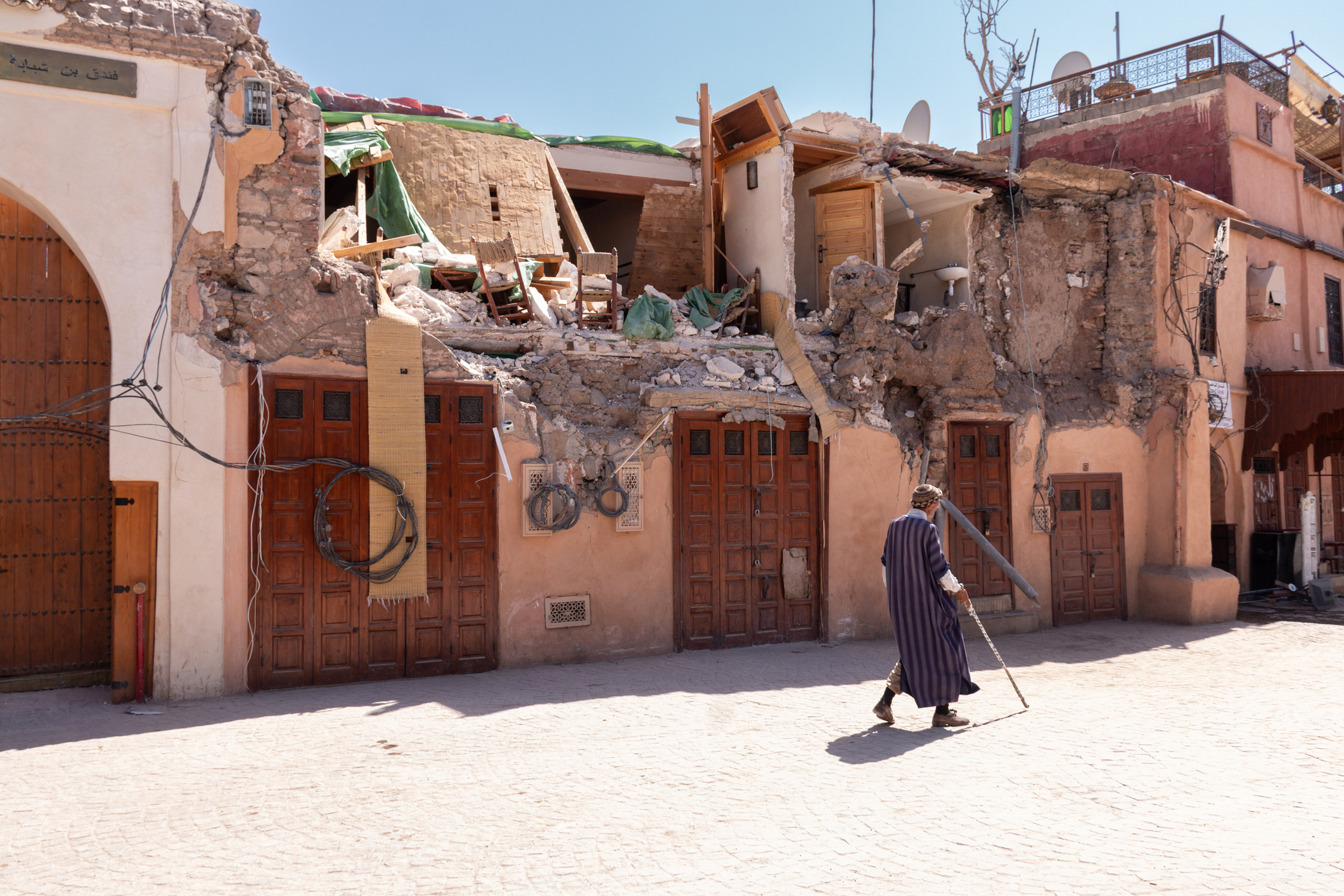
Last Friday night, my husband, Zouhair, and I were at home in Boston with our two kids making pizza when he received a call from his brother in Morocco. What began with a cheery greeting turned horrifying and tense; his brother had just fled his house with his children into their garden. He told Zouhair that everything around him was shaking, and he knew something was wrong. What he had just experienced not moments before was a 6.8 magnitude earthquake, the strongest earthquake to hit the region in over 100 years, which struck 140 miles south of our family’s home in the Azilal region.
We immediately began reaching out to our family and friends who are scattered across the region. While we could not reach all of them that night due to disruptions in telecoms, over the coming days we were relieved to discover that all of our loved ones are physically safe, but absolutely terrified. Many have slept in their cars or on the streets on subsequent nights in fear of additional tremors and crumbling buildings.
Tragically, many families were not as lucky as ours. With a growing death toll, we know that nearly 3,000 people were killed by the earthquake and thousands more injured, with many rescue teams still unable to access the remote villages in the High Atlas Mountains. Because of the location of the epicenter, as well as the construction materials used in this part of the country, we expect that the death toll will increase significantly in the coming days and week; not to mention the extraordinary physical, mental, and emotional toll felt by the survivors who will have lost family, friends, homes, and livelihoods.
Living far from our family and friends in Morocco, Zouhair and I have felt torn in two. As we made breakfast for our kids and headed out to our favorite playground here in Boston, we knew that things in Morocco were anything but normal. As we poured over the news sites, we saw devastated families in the rural mountain villages so similar to the ones we have called home. We saw pictures of the crumbling streets in Marrakech where we hold so many precious memories, including that of our wedding.
Each of us have certain communities and groups that we hold near to our hearts, and here I see the community I cherish – the people of the High Atlas Mountains – destroyed and the people devastated. While I am certainly biased, if you have ever visited the High Atlas Mountains, you know that the people who call this area home are some of the most welcoming, warm, and hardworking people you will ever meet. Families in these communities are modest, many surviving through subsistence farming and agriculture. Still, when you visit, they will offer you everything they have, even if it means their family will go without for the days or weeks that follow.
In the wake of yet another horrific disaster, I find myself once again pondering how to best provide support to those in need during this critical time. I feel like I should have a more comprehensive answer having worked in philanthropy for several years. I even wrote a master’s thesis on the role and potential impact of private philanthropy in global disasters. Yet I find myself plagued by common disaster philanthropy dilemmas. Should I give to a large organization with infrastructure, international recognition, and a depth of experience in supporting disaster efforts across the globe? Or perhaps a local organization integrated and trusted within the communities that are there right now and will remain for years to come? And while I’m at it, which types of disaster efforts should I support? Response and recovery to help with the immediate devastation? Or perhaps I should stick with a more long-term approach and contribute to activities to support prevention, mitigation, and preparedness efforts to build resilience and better equip the communities for potential future disasters.
Over the past few days, I have witnessed a deluge of information about the earthquake relief efforts. Groups of individuals in nearby towns are creating Go Fund Me pages to buy supplies to hand deliver to families. Trusted local nonprofits are organizing relief efforts, gathering information about what people need, jumping in to cook meals for survivors and opening their doors to serve as disaster relief centers. Larger international NGOs are also leaping into action and have started collecting funds and sending much needed aid.
The multitude of decisions can feel paralyzing. It feels like an impossible task to sort through these intellectual and rational options while you find yourself engrossed in the stories, pictures, and news clips flooding communication channels. During these moments, I have found it helpful to refer back to TPI’s advice on How to Effectively Respond to Humanitarian Crises Across the Globe and other resources shared by the Center for Disaster Philanthropy. In these moments, I’ve also come to rely on what I refer to as Heart, Head, and Hand Philanthropy. In my experience, giving is best done when it is led by your:
- HEART – with true passion and compassion;
- HEAD – acknowledging the pros and cons of the various options and considering the possible future impacts of good intentions; and
- HANDS – sharing your skills and talents and leveraging your privileges, whenever possible.
In words attributed to Ibrahim Hooper, “Making a donation is the ultimate sign of solidarity. Actions speak louder than words.” By engaging our heart, head, and hands, we can each respond to this and other disasters in a unique, personal way.
—
To learn more about these activities and to explore ways to support the families and communities impacted by the Moroccan earthquake, please visit TPI’s resource page that includes trusted local, national, and international aid efforts for funders to consider.
(Photo credit: Jade Prevost-Manuel via iStock)


